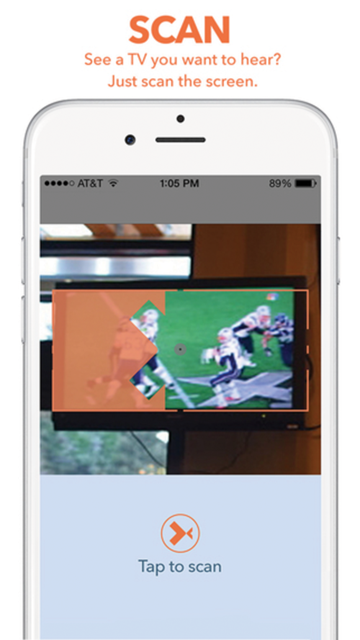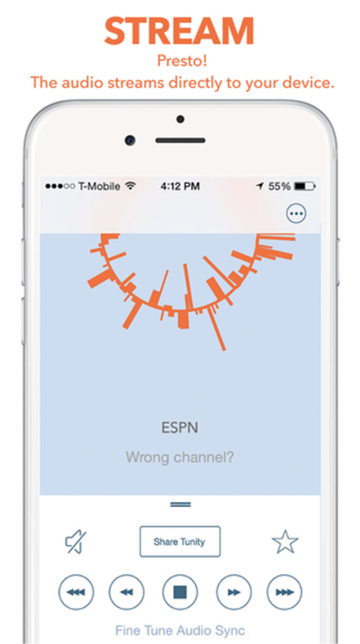Modern advancements in hearing aid technology have helped hearing aid users to hear better in difficult situations. One of these advancements has been wireless technology and accessories, some of which help when hearing aids can’t by bringing the user closer to the signal of interest, improving the signal-to-noise ratio. Some hearing aid users, particularly those with severe-to-profound hearing losses or poor speech discrimination scores, rely on wireless accessories to maximise the benefit from their hearing aids.
Although current hearing aids have made watching television much easier for individuals with hearing loss, many users still need additional help beyond the hearing aids alone. TV streamers are a popular solution that are often ordered as an add-on accessory with a hearing aid purchase.
TV streamers improve the experience of watching TV for the user by providing improved speech understanding, decreased interference from background noise, and the ability to make volume adjustments according to the user’s own listening comfort without impacting those around them. However, TV streamers come with limitations as well. The main downside of TV streamers is their mobility – or lack thereof. Unlike most other popular hearing aid accessories, which are very small and not at all cumbersome to travel with (e.g. remote control, remote microphone), TV streamers are not as easy to transport. In addition to the physical size of the TV streamer, there is the additional hassle of ensuring compatibility of cords with TVs.


Tunity is an app that allows users to turn their smartphone into a mobile TV streamer that can be used with most TVs. To use it, the user simply takes a picture of the TV screen through the app (locating services must be turned on). The app then live streams the audio through their phone to headphones or Bluetooth-connected hearing aids. The app can be used virtually anywhere that has a TV; however, the range of channels currently available is limited and only includes American channels. One can only hope that Tunity (or other apps inspired by this technology) will soon deliver a wider range of channels, including ones from outside of the USA.
Tunity provides users with control over television listening by making it possible to hear the audio signal for select channels from any television. Not only will this provide benefit to hearing aid users, but also to those with normal or near-normal hearing who find it difficult to hear the TV in certain situations, such as the gym or bar. Tunity can even be used when the objective is to watch television without disturbing others in the vicinity because it works when the television is muted.
The Tunity app will not likely replace traditional TV streamers for most users. Beyond the limited channels that are currently available with Tunity, it is well-recognised that the source of content watched on TV screens is shifting away from traditional television channels to various other digital media devices and providers. Traditional TV streamers can usually be configured to stream any audio from the television that it is connected to, regardless of the media source, while Tunity is limited to the television channels that are currently compatible with the app. Still, Tunity offers mobility and affordability beyond anything currently available and will appeal to both hearing aids users and non-users alike as a way to stream television audio. The Tunity app is currently available for free through the App Store and Google Play and is compatible with a range of mobile devices.
A comment on September/October 2017 Tech Review
– Industry update: rechargeable hearing aid batteries
It was good to see ENT & Audiology News recognise the transition of the hearing aid industry to rechargeable solutions in the Tech Reviews section of the September / October issue by Dr Emma LeBlanc. I was pleased to read the acknowledgement that patients must “get over the shock of how often they are going to need to change the batteries” and that they are looking for alternative solutions.
However, I was disappointed by Dr LeBlanc’s review of the silver-zinc (AgZn) rechargeable battery. It’s a battery that has been adopted by five of the six major global hearing aid manufacturers for their rechargeable solutions.
Dr LeBlanc correctly noted that this battery has slightly higher voltages (1.6-1.8v) than traditional zinc-air disposable batteries and there is a requirement for a voltage regulator in the hearing aid. However, this is a proven advantage of silver-zinc because ZPower, the battery manufacturer, has managed to reallocate the energy and provide more battery capacity and, therefore, longer operating times for the hearing aids. Of interest, voltage regulation is not uncommon with rechargeable products.
Dr LeBlanc also stated that “many patients feel that these [silver-zinc] types of rechargeable batteries are more of a hassle than a time and money saver.” This experience is contrary to the published articles and patient surveys on rechargeable products.
Silver-zinc is not a new chemistry and is widely used by the military and in the space industry. The stability of the silver-zinc battery materials and the complete nonflammability of the silver-zinc electrolyte make it an intrinsically safe battery technology. In addition, when compared to other rechargeable battery chemistries, silver-zinc does not have size limitations and has a higher energy density when compared to other chemistries. They also do not require the hearing aid to be sealed and can be used interchangeably with zinc-air batteries.
– Barry A Freeman, PhD, Vice President, Business Development, ZPower LLC.




